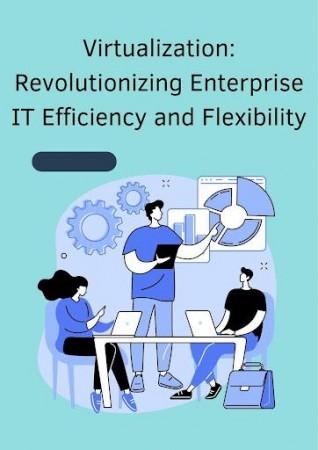
Virtualization stands out as a transformative pillar for enterprises managing modern IT infrastructure complexities. Jose Augustin, with his expertise in advanced technology, explores how it reshapes data centers, optimizes resources, and drives the progress of cloud computing.
Understanding the Core of Virtualization
Virtualization creates virtual versions of physical resources like servers, networks, and storage. Using a hypervisor to abstract hardware, organizations can run multiple virtual machines on one server, significantly improving efficiency and optimizing resource utilization.
Virtualization, developed decades ago but widely adopted in the late 1990s, now underpins cloud computing and data center modernization, crucial for businesses seeking agility and cost-effectiveness.
Maximizing Efficiency Through Resource Optimization
Virtualization enables enterprises to maximize hardware usage by hosting multiple VMs on a single physical server. Unlike traditional servers with low utilization, virtualization consolidates workloads, increasing utilization to 80% or higher, reducing operational costs, and lowering environmental impact through decreased energy consumption.
Each VM operates independently, ensuring stability and security. The hypervisor allocates resources like CPU, memory, and storage without interference, similar to businesses in a skyscraper sharing infrastructure but maintaining separate, secure spaces.
Cost Savings and Reduced Infrastructure Footprint
Virtualization offers significant cost savings by consolidating workloads onto fewer servers, reducing hardware expenses and data center space needs. This lowers capital investment and ongoing energy and cooling costs, aligning with sustainability goals by minimizing the carbon footprint.
Virtualization simplifies IT maintenance, enabling seamless VM updates, cloning, and migration. Administrators can quickly allocate resources and perform backups or hardware upgrades with minimal service disruptions.
Enhanced Agility and Scalability
Virtualization introduces unprecedented flexibility to IT operations. Instead of waiting weeks for new hardware, virtual environments can be provisioned within minutes using pre-configured VM templates. This speed enables organizations to respond to market changes or project demands more rapidly, giving them a competitive edge in fast-paced industries.
Scalability is a key advantage of virtualization. Resources such as storage and processing power can be adjusted dynamically to match workload demands, ensuring performance without extra hardware. Additionally, live migration enables VMs to move between hosts with minimal downtime, balancing workloads and facilitating proactive maintenance.
Security and Isolation: Keeping Data Safe
Virtualization ensures security in multi-tenant environments through strong isolation mechanisms. The hypervisor's memory and resource management keep VMs on the same host segregated, preventing breaches in one VM from affecting others.
Moreover, administrators can implement granular security policies at the VM level. By configuring individual firewalls and access controls for each VM, enterprises can tailor security measures to meet specific requirements, safeguarding sensitive data and critical applications.
Virtualization's Role in Cloud Computing
Virtualization underpins cloud computing by efficiently partitioning resources, enabling scalable and cost-effective services. It supports cloud infrastructure models like Infrastructure as a Service (IaaS) and Software as a Service (SaaS) through its advanced capabilities.
Beyond resource optimization, virtualization ensures high availability and disaster recovery, minimizing disruptions. Cloud environments use live migration and automatic load balancing to maintain service continuity during hardware failures.
Facing Challenges and Embracing Future Innovations
Despite its benefits, virtualization has challenges like performance overhead for I/O-intensive tasks and security risks, including hypervisor exploits. Continuous advancements, however, are mitigating these vulnerabilities.
Emerging virtualization trends include containerization for lightweight, portable solutions, edge computing to reduce latency for IoT, and AI-driven resource management that dynamically optimizes resource allocation and enhances predictive capabilities.
In conclusion, Jose Augustin underscores that virtualization goes beyond mere cost savings, acting as a strategic catalyst for enterprise innovation and digital transformation. As it evolves to address challenges and incorporate emerging technologies, virtualization continues to be crucial for modern IT infrastructure. To stay agile, efficient, and competitive in an ever-changing environment, enterprises must adapt and harness its full potential.

















